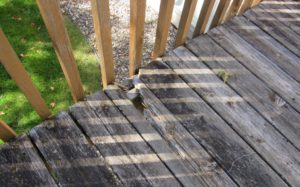Home Inspector Lakeville | Home Inspection (952-583-3701)

Your deck provides the foundation for your family’s outdoor entertainment and leisure activities, from cookouts and birthday parties to your favorite spot for Sunday morning coffee. That’s why it’s vital to ensure your deck is safe and up to current regulatory codes by performing routine inspections. With peace of mind that your deck is in solid working order, you’ll be able to get the most enjoyment from it.
On average, a professional inspection of the condition and strength of your deck’s guardrails should be scheduled every two years, and the deck surface should be cleaned at least annually to extend its lifespan and aesthetics. After all, just like your home, a deck undergoes high levels of stress throughout the year, including constant exposure to the elements, load-bearing situations and just normal wear and tear. The following deck inspection checklist is a good place to start.
Your deck faces the harsh elements of the outdoors all year long. Being exposed to extreme heat and cold can take a toll on even the most well maintained decks. So, when the inspector checks to see if your deck is up to spec, here are a few things the inspector will look out for regarding repairing your deck and its overall safety:
Insect Damage
Most modern-day decks are made of wood or composite that’s treated with chemicals to keep the bugs away. In some cases, including decks built before the 1980s, the wood isn’t treated with insect repellent, making it more likely for ants and termites to get into the framework and cause damage that can literally pull the deck away from the house.
The inspector will check for this by noting whether your deck has any movement when you first step out onto it. If they notice a slight sway when you walk out, this is a common insect vulnerabilities.
Rusted Fasteners, Connectors and More
One of the biggest factors in determining whether your deck is safe and sound is not outwardly visible. That’s why the inspector will look under your deck to ensure that fasteners, connectors and joists are all in good shape. That includes making sure that the nails, bolts, screws and other metal connector pieces aren’t rusted or otherwise compromised.
Cracks and Rotting
It’s no surprise that after extended use, wood tends to crack. Small cracks aren’t anything to be alarmed about, as long as they don’t continue to grow. However, the inspector will look for cracks located around fasteners or between joists; these can exploit weaknesses in your deck and lead to serious problems down the line if not properly treated.
Unsturdy Railing
The inspector will check to see if your railing is loose. The risk for injury is simply too great for a railing repair to be put off. Railing is a critical area of the deck, and as mentioned above, it is important to ensure proper code-compliant construction techniques are employed.
Mold and Mildew Exposure
Nearly every deck will develop a bit of a green tint from some mildew during its lifespan. Steps are the most susceptible to mildew growth, which can make them slippery and unsafe. Regular washing and staining will help prevent mildew growth. Mold and fungus, on the other hand, is nothing to take lightly. If they notice a fuzzy or mushroom-like growth, immediate attention is required as it could be a “tip of the iceberg” situation.
To ensure your deck is safe and need reassurance before buying your home, give us a call today!

